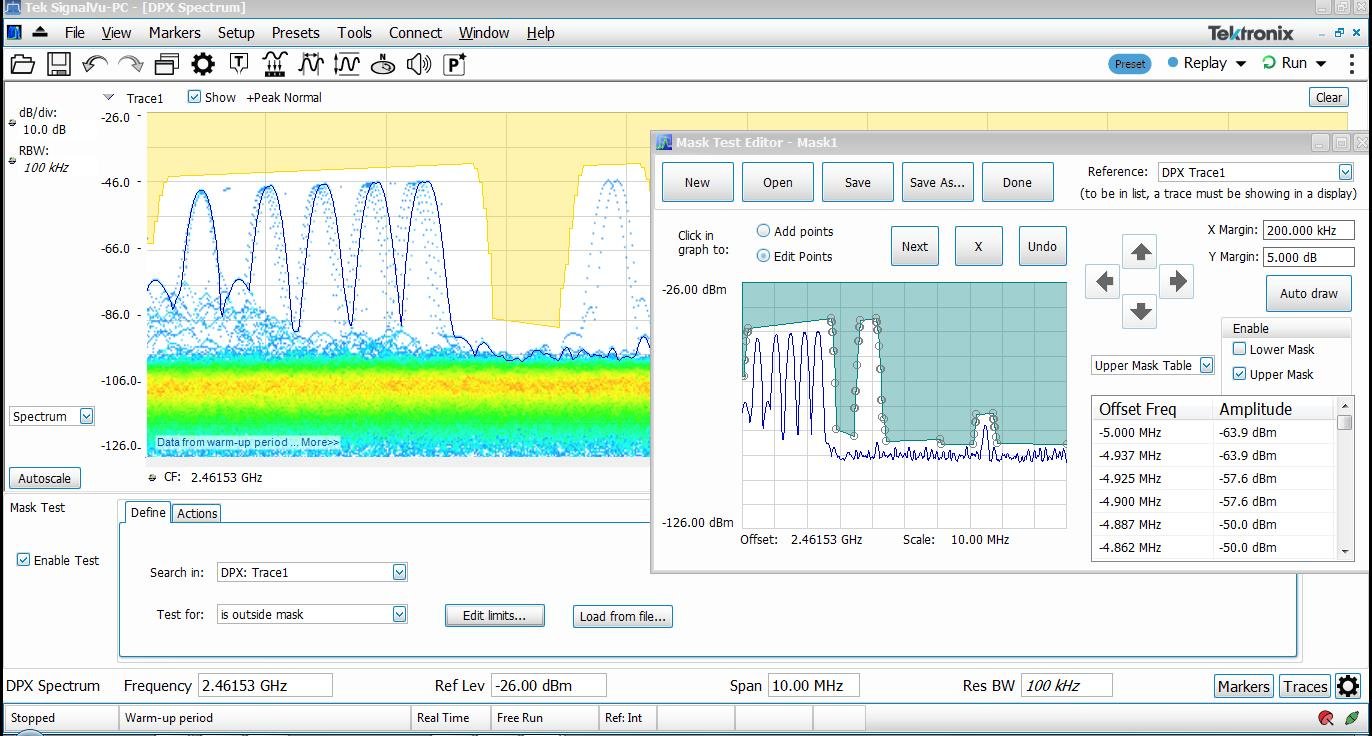

When RF systems are being compromised with interference it’s often very time consuming to manually monitor the spectrum waiting for something to happen. While there are critical situations when the time investment is justified, the reality is that as interference hunters we need some automated tools that can alleviate the tedious work of staring at a span waiting for something to happen.
The good news is that users of Tektronix spectrum analyzer now have access to tools like Mask Search, which is a built-in function of the Tektronix SignalVu-PC spectrum analysis application. Mask Search allows users to create a graphical mask around their frequency of interest and then trigger an action when the mask is violated.

Mask Search provides a number of trigger mechanisms;
· Signal > pre-defined level – this lets the user setup a detection threshold for a signal
· Signal < pre-defined level – this provides a RF drop-out trigger
· Signal inside a Mask – this provides a container to hold a signal
· Signal outside a Mask -- this provides a shield around a signal
The challenge for most systems that employ some form of mask testing is actually creating the mask itself. SignalVu-PC takes care of this by providing means of automatically creating the mask based on the trace the user defines. Essentially the user can create a “golden signal” and use this as template for SignalVu-PC to create the mask condition.

The Mask Search function can employ either the fast DPX engine or the regular spectrum engine data. The real power of the mask search function is that it can run for hours and only store data once the trigger condition has been met. Data that can be stored includes
Acquisition data:
· This is the IQ data that the real-time spectrum engine is collecting
· Users can define how much IQ data is stored for each trigger
Trace data:
· This is the basic trace data that is on the screen during the trigger event
Screen shots:
· The interesting thing here is that you can have multiple measurements running at the same time and grab a screen shot of everything that is happening when the interference occurs
· There are additional features in SignalVu-PC to automatically email the screen shot to you each time a new screen shot is recorded
The Mask Search feature essentially creates a tool that provides a snapshot of the RF activity each time the trigger occurs. Remember that a base version SignalVu-PC is a free download from the Tektronix web site. So if you deploy a unit in the field to collect data, you can share this data with your colleagues and they can view the RF interference with their own copy of SignalVu-PC.
Is Mask Search the interference hunters new best friend? Let us know in the comments below. And be sure to stay tuned for Part 4 in this series when we look at how advanced recording features in RTSAs might just prevent an extra trip to remote locations because you forgot to make a particular measurement.
For more information on spectrum management and interference hunting be sure to visit our resource center. You’ll find a wealth of information such as our handy e-guide to RF Signals.
Read the other entires in this series here:
Part 1: Get the insight you need to see interference in a crowded spectrum
Part 2: How often is the interference happening?
Part 4: Storing and sharing captures, the interference hunter’s safety net
About the Author
Robin Jackman is a field applications engineer based in Toronto, Ontario. He has been with Tektronix for more than 15 years supporting customer applications throughout North America. His work with Tektronix has covered both analog and digital design with a focus on RF applications. Prior to Tektronix he spent 12 years working for the federal government in spectrum management.



